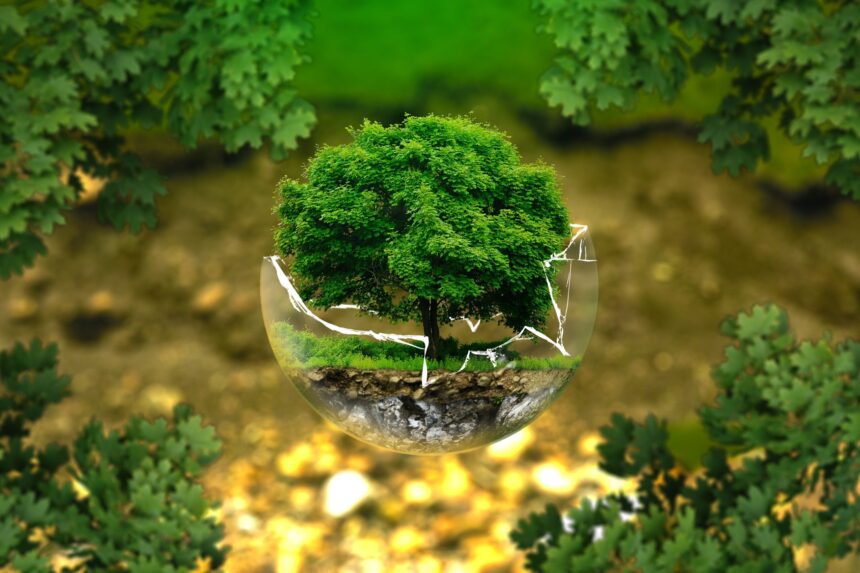Photo by AndreasAux on Pixabay
The preservation of the environment is a crucial concern for all inhabitants of Earth. As the stewards of the planet, it’s our responsibility to ensure the sustainability of resources and the protection of ecosystems for future generations. This article delves into the depths of environmental preservation, its importance, and the steps we can take to ensure its success.
Understanding Environmental Preservation
Environmental preservation refers to the act of safeguarding the natural environment from harmful human activities. It involves maintaining the balance of ecosystems, conserving resources, and implementing strategies to reverse environmental degradation.
The Necessity of Environmental Preservation
Environmental preservation is vital for numerous reasons, from protecting human health to conserving biodiversity and natural resources. Here’s why environmental preservation is non-negotiable:
Human Health Protection
A clean environment directly influences our health. By reducing pollution, we can maintain a healthy living environment and reduce the risk of illnesses.
Biodiversity Conservation
Biodiversity ensures the balance and health of ecosystems, and environmental degradation threatens the existence of various species. Environmental preservation helps maintain biodiversity.
Natural Resources Preservation
The sustainable management of resources like water, air, soil, and energy is crucial for human survival and economic development. Environmental protection contributes to the preservation of these resources.
Climate Change Mitigation
Environmental protection measures, such as reducing greenhouse gas emissions and promoting renewable energy use, can slow down climate change and restore a balanced global environment.
Better Living Environment Creation
In the long term, environmental protection aims to create a sustainable future where people can live in a clean and safe environment.
Approaches to Environmental Protection
Several approaches can be utilized to protect the environment, including voluntary environmental agreements, ecosystems approach, and international environmental agreements.
Voluntary Environmental Agreements
In many countries, voluntary environmental agreements provide a platform for companies to be recognized for moving beyond the minimum regulatory standards, thus supporting the development of environmental practices.
Ecosystems Approach
An ecosystems approach to environmental protection considers the complex relationships of an entire ecosystem, rather than simply responding to specific issues.
International Environmental Agreements
International environmental agreements, like the Paris Agreement of 2015 or the United Nations Conference on the Human Environment, provide a legal framework for environmental protection on a global scale.
Role of Government in Environmental Protection
The role of government in environmental protection is paramount. Government legislation, enforcement, and policy-making greatly influence the pace and efficacy of environmental protection efforts.
Government-Initiated Environmental Protection Measures
Several governments worldwide have implemented measures to protect the environment. These measures range from establishing regulatory standards to initiating clean-up campaigns.
Government Role in Developing Countries
In developing countries, governments play a significant role in environmental protection. Initiatives such as establishing protected areas, implementing laws regulating resource use, and developing environmental act have been undertaken by various governments.
Role of Individuals in Environmental Protection
Environmental protection isn’t just the responsibility of governments and corporations – individuals play a vital role too. Here are some ways individuals can contribute:
Use of Biodegradable Products
Switching to biodegradable items can help minimize environmental impact. Products with natural origins, such as bamboo straws or cloth bags, are excellent alternatives to plastic.
Minimizing Waste
Limiting waste and avoiding littering is the responsibility of each individual to maintain a clean environment.
Planting Trees
Tree planting is an effective way to enhance green spaces and purify the air.
Conserving Energy and Water
Making conscious efforts to conserve energy and water can significantly contribute to environmental protection.
Participating in Environmental Protection Activities
Participating in activities like tree planting projects, clean-up campaigns, or supporting environmental organizations can contribute to a cleaner, greener environment
Conclusion
Environmental preservation is a collective responsibility that we all share. By understanding its importance and implementing measures at both macro and micro levels, we can contribute to the well-being of our planet. Remember, every effort counts, no matter how small.



Thanks for information
Perfectly spoken without a doubt. .